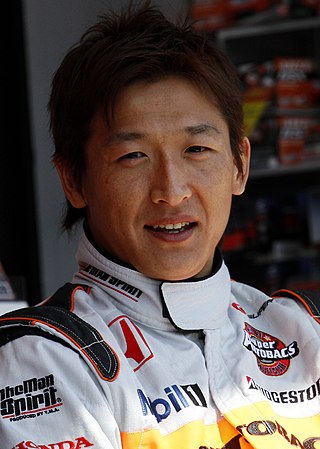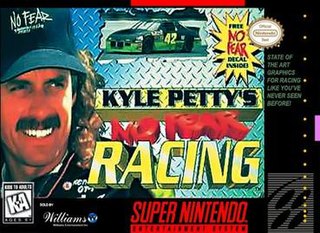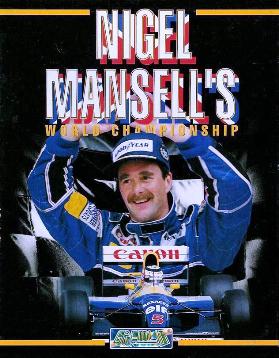Mario Kart is a series of kart racing games and a spin-off Mario franchise developed and published by Nintendo. Players compete in go-kart races while using various power-up items. It features characters and courses mostly from the Mario series as well as other gaming franchises such as The Legend of Zelda, Animal Crossing, F-Zero, Excitebike, and Splatoon.

Super Mario Kart is a kart racing game developed and published by Nintendo for the Super Nintendo Entertainment System (SNES). The first game in the Mario Kart series, it was released in Japan and North America in 1992, and in Europe the following year in 1993. Selling 8.76 million copies worldwide, the game went on to become the fourth best-selling SNES game of all time. Super Mario Kart was re-released on the Wii's Virtual Console in 2009, on the Wii U's Virtual Console in 2013, and on the New Nintendo 3DS's Virtual Console in 2016. Nintendo re-released Super Mario Kart in 2017 as part of the company's Super NES Classic Edition.
Racing games are a video game genre in which the player participates in a racing competition. They may be based on anything from real-world racing leagues to fantastical settings. They are distributed along a spectrum between more realistic racing simulations and more fantastical arcade-style racing games. Kart racing games emerged in the 1990s as a popular sub-genre of the latter. Racing games may also fall under the category of sports video games.

Takuma Sato, nicknamed "Taku", is a Japanese professional racing driver. He competes part-time in the IndyCar Series, driving the No. 11 Honda for Chip Ganassi Racing. Sato is a two-time winner of the Indianapolis 500, having won the event in 2017 and 2020. He was the first Asian driver to win the Indianapolis 500, and the twentieth driver to win the race more than once. Before winning the Indianapolis 500, Sato became the first Japanese-born driver to win an IndyCar Series race when he won the 2013 Grand Prix of Long Beach.

Aguri Suzuki is a Japanese former racing driver. He participated in 88 Formula One Grands Prix, his best result being third place at the 1990 Japanese Grand Prix. He then became involved in team ownership, with interests firstly in the Japanese Formula Nippon Championship and the IRL in partnership with Mexican racer Adrian Fernandez. He was the owner of the Super Aguri F1 team, which participated in Formula One from 2006 to 2008. He then went on to form Team Aguri, which raced in Formula E from 2014 to 2016.

Stunt Race FX, known in Japan as Wild Trax, is a racing video game developed by Nintendo and Argonaut Software and published by Nintendo for the Super Nintendo Entertainment System. It is the second game to use the 3D-centric Super FX powered GSU-1.

F1 Race is a racing video game developed by HAL Laboratory and published by Nintendo for the Famicom in 1984. A version was released in 1990 for the Game Boy in Japan and in 1991 in Europe and North America, including the Four Player Adapter for four-player gameplay.

Yuji Ide is a Japanese racing driver. He is the 2005 Formula Nippon runner-up and the 2010 Suzuka 1000km winner. He competed in Formula One with the Super Aguri team in 2006, but was demoted to third driver after four races and subsequently lost his FIA Super Licence.

SD F-1 Grand Prix is a Japan-exclusive video game based on the F1 Grand Prix series. This video game spin-off was developed for the Super Famicom by Video System.

Kyle Petty's No Fear Racing is a stock car racing video game for the Super NES that was released in 1995.

Super Monaco GP is a Formula One racing simulation video game released by Sega, originally as a Sega X Board arcade game in 1989, followed by ports for multiple video game consoles and home computers in the early 1990s. It is the sequel to the 1979 arcade game Monaco GP. The arcade game consists of one race, the Monaco Grand Prix, but later ports added more courses and game modes based on the 1989 Formula One World Championship.

F1 Pole Position 64, released in Japan as Human Grand Prix: The New Generation, is a racing video game for the Nintendo 64 developed by Human Entertainment and published by Human Entertainment in Japan, and published by Ubi Soft for North American and Europe. It is the fifth and final game in the Human Grand Prix / F1 Pole Position series, featuring Formula One branding.

Formula One Championship Edition is a racing video game developed by Studio Liverpool and published by Sony Computer Entertainment exclusively for PlayStation 3.

Autobacs Racing Team Aguri (ARTA) is a joint racing project formed between former F1 driver Aguri Suzuki and Autobacs in 1997. The team's original name was "ARTA F1 Project," but due to trademark claims based on the usage of the word "F1", the name has since been shortened to "ARTA". ARTA was the 2007 Super GT GT500 series champion in both the drivers' and team championship.

F1 Pole Position is a 1992 racing video game for the SNES, developed by Human Entertainment and published by them in Japan, while the other versions were handled by Ubisoft. It is the first game in the Human Grand Prix/F1 Pole Position series, which features Formula One licensing.

Nigel Mansell's World Championship Racing is an arcade-style Formula One racing video game developed by Gremlin Graphics and released for various systems. The game was largely successful on Amiga and DOS platforms, and was consequently ported to home consoles.

Satoru Nakajima F-1 Hero GB World Championship '91 is a 1991 Japan-exclusive Game Boy Formula One video game published by Varie, endorsed by Satoru Nakajima, who was the first full-time Japanese racer in the history of Formula One. Apart from Nakajima, the actual names of the drivers are not used due to licensing arrangements.
F-1 Spirit is a series of Formula One-based racing video games developed and published by Konami starting on the MSX in 1987.

Final Stretch (ファイナル・ストレッチ) is a 1993 Japan-exclusive Super Famicom Formula One racing video game licensed by FOCA to Fuji Television, which is based on the 1993 Formula One season.
Team Aguri, formerly Amlin Aguri and officially the Team Aguri Formula E Team, was an international motor racing team founded by former Formula One and 24 Hours of Le Mans driver Aguri Suzuki and Mark Preston to compete in the FIA Formula E Championship for electric cars. The team was based in Tokyo, Japan, and was in a technical partnership with McLaren. At the end of the 2015–16 season, the team was sold to China Media Capital and renamed Techeetah.

















